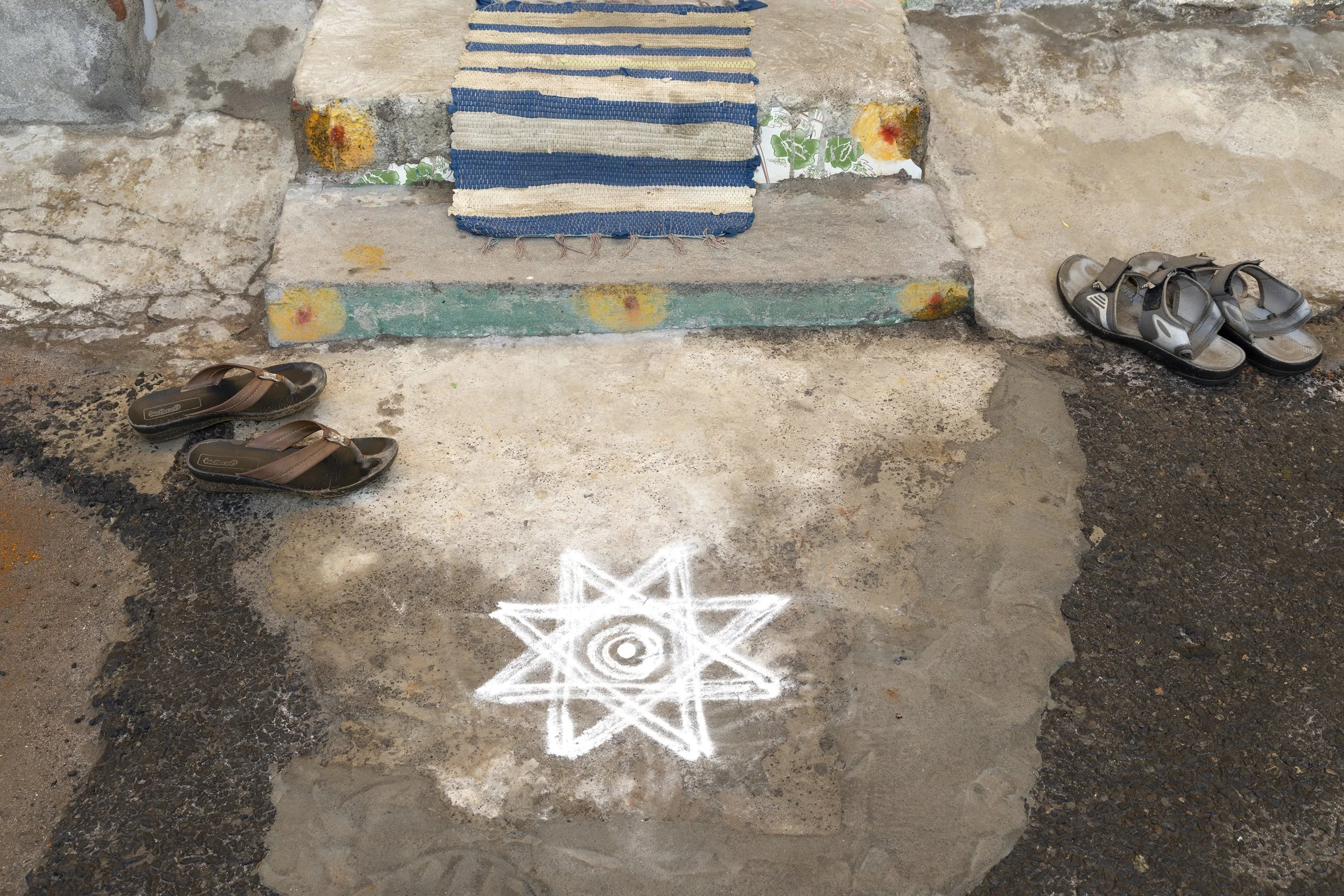Bless This House – Pondicherry
Bless This House – Pondicherry, part of the Bless This House series, is a multimedia project that examines the cultural and spiritual significance of kolams, intricate geometric designs created by Indian women on the thresholds of their houses. The kolams, made with rice flour, hold a sacred purpose as they bless the home and its dwellers. My project focuses on the ritualistic aspect of this traditional practice through integration and reinterpretation.
In my ongoing exploration of the kolam, a spiritual art form primarily practiced in South India, I aim to address questions concerning the role of spiritual practices and rituals in contemporary life. In a world where spirituality and rituals have gradually diminished, particularly in Western societies, my project seeks to challenge prevailing apathy and rejection of these practices by tackling the following inquiries: Do spirituality and its associated art forms hold relevance in our lives? How do they contribute to the well-being of individuals and society as a whole? Why is there a need for rituals that engage the body, mind, and soul? Could there be a place for spiritually oriented art in the contemporary art world?
The kolam, also known as rangoli or rangavalli in various parts of India, is predominantly characterized by geometric designs. The initial stage of creating a kolam involves marking dots on the ground to establish a grid, upon which lines and curves are drawn. There is an inherent mathematical aspect to this art form, with identifiable fractal patterns within the kolam. As a spiritual artwork, the kolam serves as a meditative device, akin to the mandala.
In India, a typical morning scene often features women emerging from their homes, having completed their morning chores, to engage in the daily practice of making kolams. These practitioners sprinkle rice powder by hand directly on the ground, demonstrating respect with their backs slightly bent and bare feet firmly planted on the ground, Mother Earth. This ritual is repeated daily, typically during sunrise and sunset, marking the thresholds of the day, as a prayer for a safe transition into the next phase. These women take on the role of spiritual guardians of their families, as the drawings are meant to bless the home, honor the deities, and ward off evil spirits. As the practitioner engages her mind and soul with a prayer and physically expresses her devotion through the intricate patterns of the kolam, she forges a profound connection with her family, society, the spiritual realm, and herself. Passersby who encounter these kolams also experience their effects, strengthening the bonds of community.
Rituals play a vital role in helping practitioners feel grounded, fostering connections within their community, and aiding in transitioning from one life stage to the next. Regrettably, traditional rituals are disappearing in many societies due to globalization and cultural homogenization. Philosopher Byung-Chul Han asserts that narcissistic tendencies, coupled with technology, have driven people away from rituals. He suggests that it is through the ritualistic sharing of the symbolic within a community that objectivity is created, enabling people to make sense of time. Without rituals, individuals or societies risk losing the demarcation between different life activities and the passage from one phase to another, resulting in a lack of closure.
Spiritually inspired art holds the potential to fulfill humanity's innate, primordial yearning for a connection with the mystical and aid in the healing of the fractured self and society. I believe there should be a collective shift toward a form of art that engages not only the intellect but also the body and soul. Failing to do so may result in an imbalance within the individual, where the mind is amplified while the body and soul atrophy, perpetuating the disconnect within society as people fail to acknowledge each other's spirits and their communal bond.
I define spirituality as the experience or expression of the sacred. It is an individual experience. Spiritual practice is one’s journey towards liberation or enlightenment, awareness of self, the discovery of higher truths, true nature of reality, and a consciousness that is in the state of bliss.








